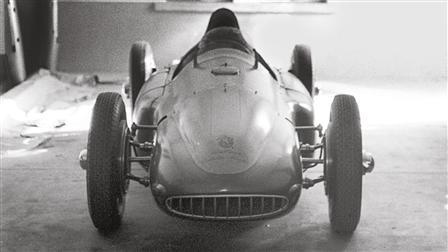
Right-sizing
Pioneer: The Austro-Daimler Sascha posts a top speed of over 140 km/h in 1922.
More with less. When the little guy triumphs over the giants, he’s bound to have the crowd on his side—one reason, undoubtedly, why
It all began with Sascha. Known to his friends by this affectionate form for Alexander in Russian, Count Alexander Kolowrat-Krakowsky not only played a pioneering role in developing the Austrian film industry, but also inspired a small race car built by Austro-Daimler in 1922. The car was named Sascha in honor of the count.
The car was to be the highlight of Ferdinand
![[+]](https://staging.www.porsche.com/filestore/image/multimedia/none/christophorus-issue376-article05-content-01/normal/ccda5142-fd5c-11e5-84b6-0019999cd470/porsche-normal.jpg)
Ferdinand
Austro-Daimler Sascha, Engine: Four-cylinder series, Power: 33 kW (45 hp), Displacement: 1,089 cc, Top track speed: 144 km/h (89 mph).
Le Mans passengers: Huschke von Hanstein, among others, in the 550 Spyder of the Olivier/Duntov team in 1954.
With its overall weight of less than 600 kilograms, the compact race car had an outstanding power-to-weight ratio. This made Sascha ideally suited to curvy races, such as the renowned
![[+]](https://staging.www.porsche.com/filestore/image/multimedia/none/christophorus-issue376-article05-content-02/normal/ccda5143-fd5c-11e5-84b6-0019999cd470/porsche-normal.jpg)
Perfect aerodynamics helped guide the 356 SL to victory.
Winner: The 956 of 1982 bested the bigger-engined competition with a 2.65-liter engine.
Throughout the 1960s, the small displacement classes were the undisputed domain of the Zuffenhausen-based brand. The 1.5-liter eight-cylinder boxer engine originally built for Formula One in 1962 was developed into a two-liter engine that would become the most successful racing engine of its time. Used in the types 904, 906, 907, 909, and 910,
![[+]](https://staging.www.porsche.com/filestore/image/multimedia/none/christophorus-issue376-article05-content-03/normal/d4861fa3-fd5c-11e5-84b6-0019999cd470/porsche-normal.jpg)
A plastic shell and a tubular space frame were the recipe for success for the 910.
Leading the way: The
Adding to a long list of successes, the
![[+]](https://staging.www.porsche.com/filestore/image/multimedia/none/christophorus-issue376-article05-content-04/normal/dc2d2b44-fd5c-11e5-84b6-0019999cd470/porsche-normal.jpg)
From 1974 onward, the 911
The
By Dieter Landenberger
![[+]](https://staging.www.porsche.com/filestore/image/multimedia/none/christophorus-issue376-article05-margin-01/normal/36612622-fd5d-11e5-84b6-0019999cd470/porsche-normal.jpg)
![[+]](https://staging.www.porsche.com/filestore/image/multimedia/none/christophorus-issue376-article05-margin-02/normal/3d5f3023-fd5d-11e5-84b6-0019999cd470/porsche-normal.jpg)
![[+]](https://staging.www.porsche.com/filestore/image/multimedia/none/christophorus-issue376-article05-margin-03/normal/3d5f3024-fd5d-11e5-84b6-0019999cd470/porsche-normal.jpg)
![[+]](https://staging.www.porsche.com/filestore/image/multimedia/none/christophorus-issue376-article05-margin-04/normal/46b051e3-fd5d-11e5-84b6-0019999cd470/porsche-normal.jpg)

















